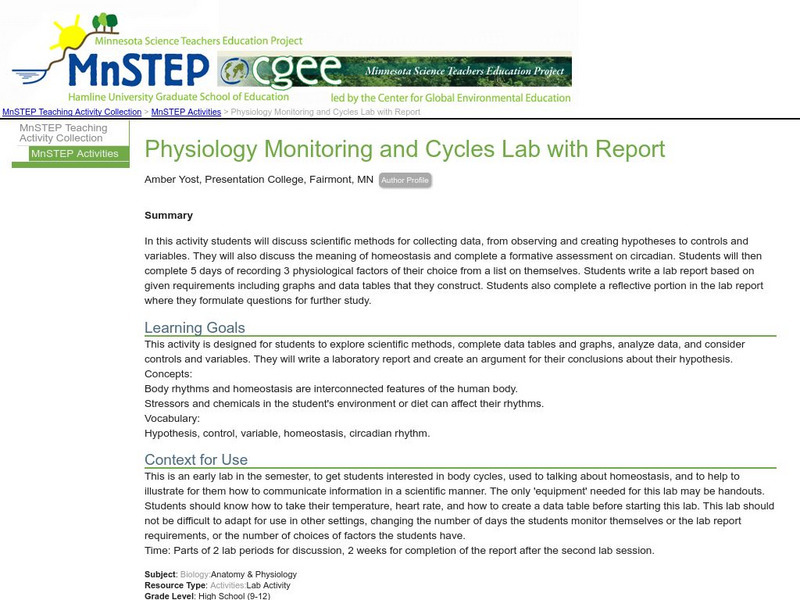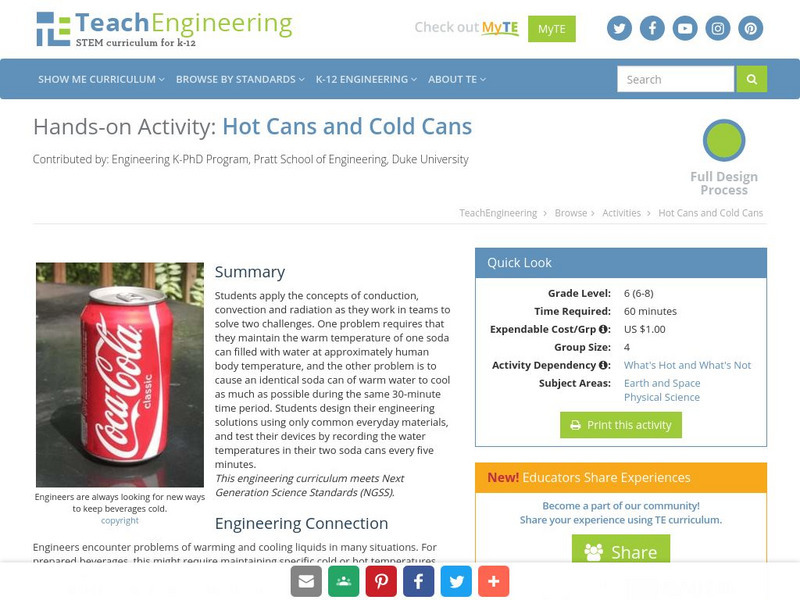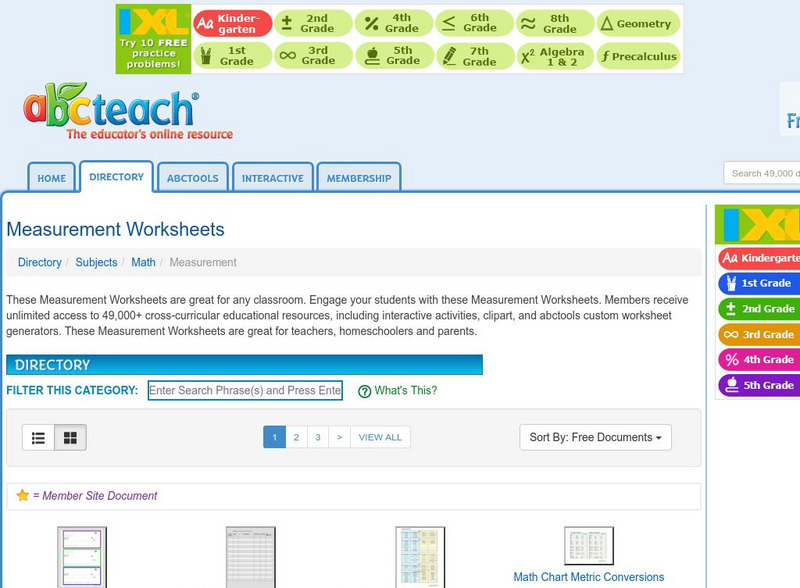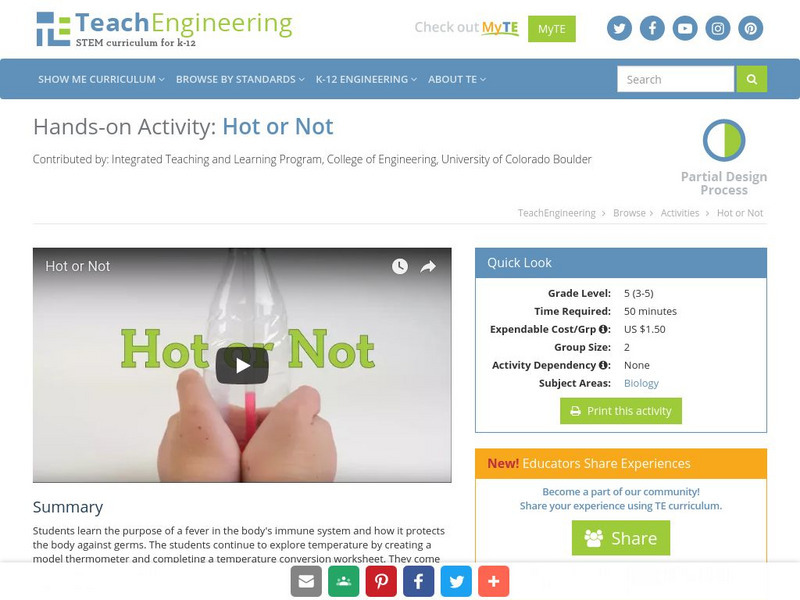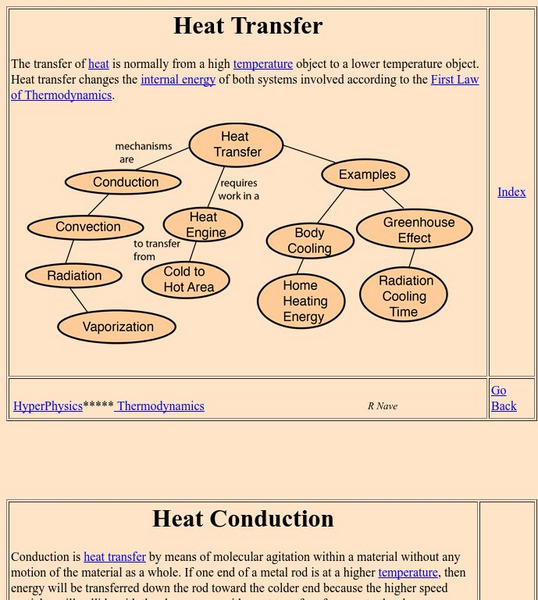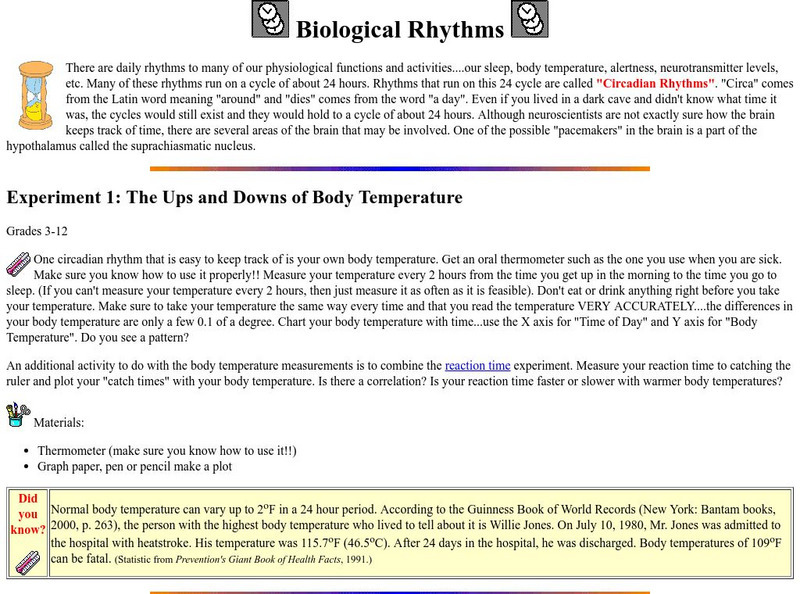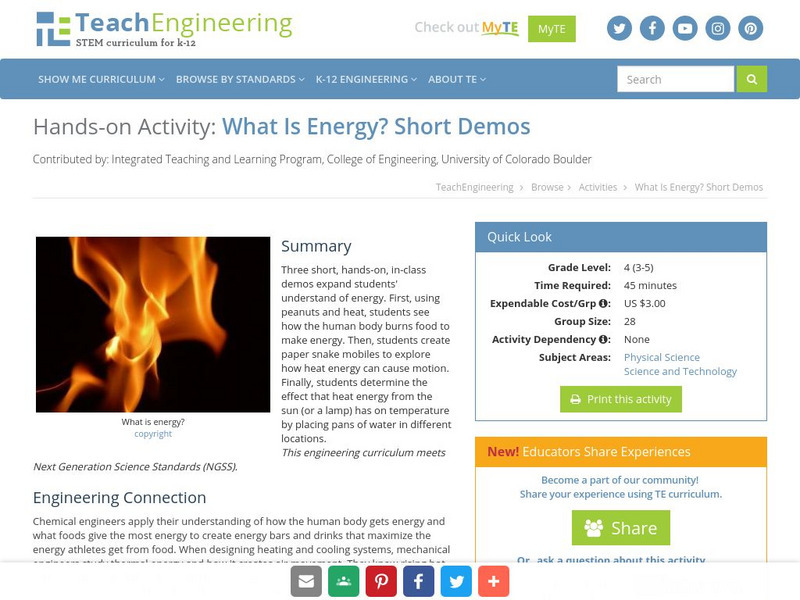TeachEngineering
Teach Engineering: How Do Human Sensors Work?
This lesson highlights the similarities between human sensors and their engineering counterparts. Taking this approach enables students to view the human body as a system, that is, from the perspective of an engineer. Humans have...
OpenStax
Open Stax: Requirements for Human Life
Earth and its atmosphere have provided us with air to breathe, water to drink, and food to eat, but these are not the only requirements for survival. Although you may rarely think about it, you also cannot live outside of a certain range...
Science Education Resource Center at Carleton College
Serc: Physiology Monitoring and Cycles Lab With Report
Using physiology monitoring, students will understand how to collect data using scientific methods in this activity. Students will also learn how to communicate the finding in a lab report. Physiology monitoring will include measuring...
CK-12 Foundation
Ck 12: Life Science: Homeostasis
[Free Registration/Login may be required to access all resource tools.] When you walk outside on a cool day, does your body temperature drop? No, your body temperature stays stable at around 98.6 degrees Fahrenheit. Even when the...
TeachEngineering
Teach Engineering: Hot Cans and Cold Cans
Students apply the concepts of conduction, convection, and radiation as they work in teams to solve two problems. One problem requires that they maintain the warm temperature of one soda can filled with water at approximately body...
California Institute of Technology
Infrared Zoo Lesson 3: The Invisible Zoo
How do biologists and zoologists use infrared technology to learn how warm and cold-blooded animals thermoregulate their internal body temperature? Have your students explore this phenomenon using this great lesson plan.
abcteach
Abcteach: Math: Measurement
[Free Registration/Login Required] Teachers will find a variety of worksheets, booklets, conversion charts, warm-up activities and more on measurements. There is even one activity that could be used in a French language class which...
Other
Ornithology: Metabolism and Thermoregulation
A good site that discusses the rate at which a bird's metabolism functions and its effect on the body temperature of the animal.
Other
Online Conversion
Conversion calculators galore! Convert just about anything from one measureable unit into another measureable unit here with over two dozen calculators. Each of the links is specific to a measureable quantity. Some examples include...
TeachEngineering
Teach Engineering: Hot or Not
This activity explains what a fever is and how the immune system uses it to try and protect the body against germs. The students then explore temperature further by creating a model of a thermometer and completing a temperature...
Other
Monitoring Physiological Changes: Scientific Basis of Fertility Awareness
Learn all you can with this guide to fertility awareness. Clear explanations regarding male and female physiology and how it is related to fertility. Discover the best times to become pregnant or to avoid it. Links to other pregnancy and...
Colorado State University
Metric Numbers to Remember
Look to this site for many important numbers and conversion factors used between the metric system and the customary system, such as speed of light, body temperature, distance from sun to earth, plus more.
PBS
Pbs Teachers: Scientific American: Superhumans & Bionics: Mind Over Machine
Investigate a unique project that uses brain waves to operate machines, and perform biofeedback experiments to control physiological processes. Control hiccups and regulate your body temperature with your mind.
Georgia State University
Georgia State University: Hyper Physics: Heat Convection
Using understandable words and exceptional graphics, this page describes the transfer of energy by means of the convection process. Contains several links to related topics.
Curated OER
Kids Health: A Kids Guide to Fever
Get the facts on what causes a fever and how you get rid of it in this article written for kids.
Michigan State University
Michigan State University: Climate and Weather Unit
A weather unit designed to help the students examine 3 factors to determine weather and climate: latitude, elevation, and nearness to large bodies of water.
Curated OER
Smithsonian Institution Archives: Lillian Mary Moore (1887 1929)
Lillian Mary Moore (1887-1929) earned her Ph.D. from the department of physiology at the University of California, and then taught there from 1923 to 1929. Moore's research focused on regulation of body temperature
University of Washington
Neuroscience for Kids: Biological Rhythms
Site contains experiments students can do in the classroom to enhance their understanding of biological rhythms.
Science and Mathematics Initiative for Learning Enhancement (SMILE)
Smile: What's Covering You? And Why
This lesson plan features activities that investigate four functions of skin.
Curated OER
Kids Health: Heat Exhaustion and Heatstroke
What are the signs and symptoms of heat exhaustion and heatstroke? Learn the answer to this question and learn about emergency treatment in case of heat exhaustion or heatstroke.
Frontiers Media
Frontiers: Feeling Your Way and Knowing by Touch
You can perceive things by touching, tasting, smelling, listening and seeing. The sensory system that allows us to "feel" is called somatosensation (so-MAT-o-sen-sa-shun). Somatosensation is a broadly defined perceptual system that...
TeachEngineering
Teach Engineering: What Is Energy? Short Demos
Three short, hands-on, in-class demos expand students' understand of energy. First, using peanuts and heat, students see how the human body burns food to make energy. Then, students create paper snake mobiles to explore how heat energy...
Curated OER
Educational Technology Clearinghouse: Maps Etc: Winter Monsoon in India, 1910
A map from 1910 of the Indian subcontinent and the Central Asia region showing the typical rainfall distribution patterns during the winter monsoons, keyed to show areas of rainfall ranging from very light to heavy rainfall. The map...
Curated OER
Educational Technology Clearinghouse: Maps Etc: Summer Monsoon in India, 1910
A map from 1910 of the Indian subcontinent and the Central Asia region showing the typical rainfall distribution patterns during the summer monsoons, keyed to show areas of rainfall ranging from very light to, according to this text, the...
Other popular searches
- Body Temperature Regulation
- Body Temperature Control
- Body Temperature in Animals
- Normal Body Temperature
- Control of Body Temperature
- Altered Body Temperature
- Controlling Body Temperature
- Measuring Body Temperature
- Body Temperature Taking
- Maintaining Body Temperature
- Body Temperature Regualation
- Altered Body Temperature Ppt




